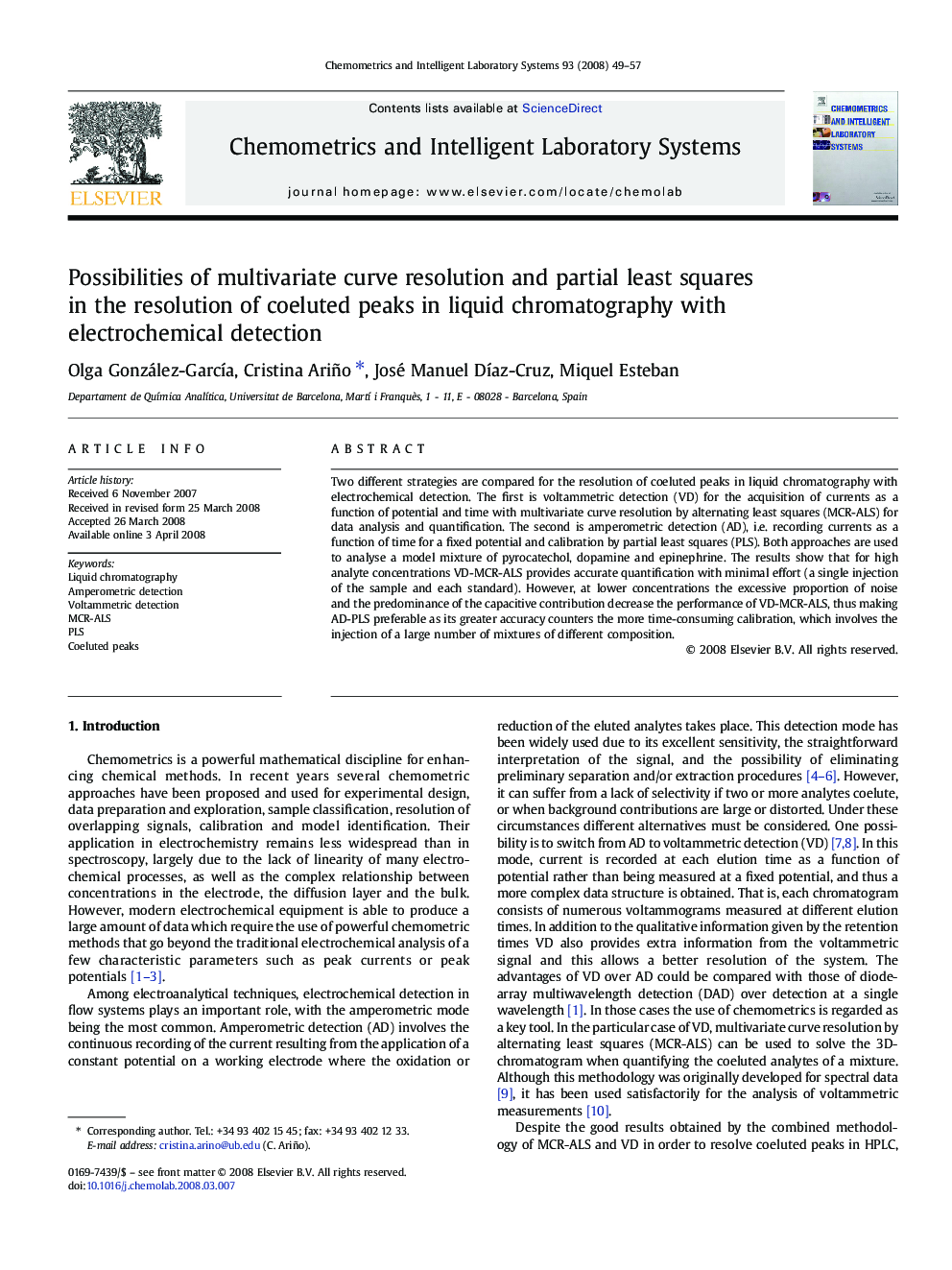| Article ID | Journal | Published Year | Pages | File Type |
|---|---|---|---|---|
| 1181634 | Chemometrics and Intelligent Laboratory Systems | 2008 | 9 Pages |
Two different strategies are compared for the resolution of coeluted peaks in liquid chromatography with electrochemical detection. The first is voltammetric detection (VD) for the acquisition of currents as a function of potential and time with multivariate curve resolution by alternating least squares (MCR-ALS) for data analysis and quantification. The second is amperometric detection (AD), i.e. recording currents as a function of time for a fixed potential and calibration by partial least squares (PLS). Both approaches are used to analyse a model mixture of pyrocatechol, dopamine and epinephrine. The results show that for high analyte concentrations VD-MCR-ALS provides accurate quantification with minimal effort (a single injection of the sample and each standard). However, at lower concentrations the excessive proportion of noise and the predominance of the capacitive contribution decrease the performance of VD-MCR-ALS, thus making AD-PLS preferable as its greater accuracy counters the more time-consuming calibration, which involves the injection of a large number of mixtures of different composition.
